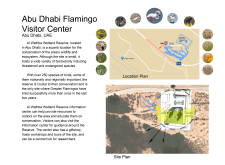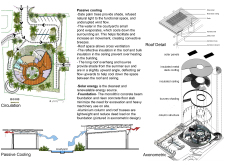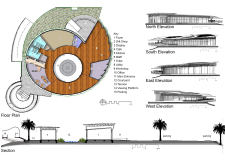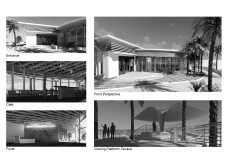5 key facts about this project
The building's circular form is a deliberate design choice that symbolizes harmony with nature, while the central courtyard creates a direct connection between indoor and outdoor environments. This layout encourages natural light penetration and cross-ventilation, which are essential in the region's arid climate. The visitor center includes various functional spaces such as a gift shop, café, educational displays, and viewing platforms, all tailored to enhance the visitor experience.
Unique Sustainability Features
The Abu Dhabi Flamingo Visitor Center distinguishes itself through multiple sustainable design features. The architectural approach prioritizes natural climate control with elements such as shade from strategically placed date palm trees that help moderate ambient temperatures. The use of water evaporation from a central pond also plays a key role in cooling the surrounding area, effectively promoting a more comfortable microclimate.
Materials selected for the project support sustainability and functionality. Monolithic concrete provides a reliable foundation, while lightweight aluminium trusses aid in reducing structural load. The insulated metal decking contributes to thermal efficiency, and the integration of solar panels enhances energy independence.
Adaptive Use of Space
The architectural design incorporates flexible spaces that allow for multifunctional use, thereby maximizing the utility of each area within the center. The main foyer serves as a central hub for visitor orientation, guiding guests towards various amenities. The layout ensures efficient visitor flow, minimizing congestion while allowing for an immersive experience in the surrounding natural habitat.
The viewing platforms are particularly noteworthy, offering panoramic vistas of the wetlands that encourage wildlife observation and photography. This interaction with the environment is integral to the center's mission of promoting ecological awareness.
For a more comprehensive understanding of the architectural design and functionality, readers are encouraged to explore the detailed architectural plans, sections, and design ideas that illustrate the project’s commitment to sustainability and visitor engagement.


























